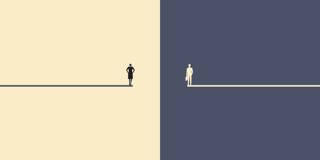Iceland owes its progress in narrowing the gender-based wage gap to a decades-long equal-rights movement and targeted public policies, including paid childbirth leave and government-subsidized preschool. This experience closely aligns with the insights of Nobel laureate economist Claudia Goldin.
REYKJAVIK – Last year, a 24-hour women’s strike was organized to protest the country’s gender pay gap and gender-based violence. Thousands gathered in central Reykjavík to demonstrate their solidarity.
For the 14th year running, Iceland (91.2%) takes the top position in the Global Gender Gap Report 2023. It also continues to be the only country to have closed more than 90% of its gender gap. The Economist’s glass-ceiling index rates Iceland as the best place in the world for women in the workforce. Nevertheless, Icelanders firmly believe that any wage gap is too large.
In her Nobel Prize-winning research, Harvard economist Claudia Goldin offers crucial insight into the factors that shape women’s labor market outcomes. For starters, she shows that changing expectations played a major role in narrowing the wage gap with men in the United States in the twentieth century. Between 1967 and 1989, the share of young women expecting to be employed at age 35 skyrocketed from 33% to 80%.

REYKJAVIK – Last year, a 24-hour women’s strike was organized to protest the country’s gender pay gap and gender-based violence. Thousands gathered in central Reykjavík to demonstrate their solidarity.
For the 14th year running, Iceland (91.2%) takes the top position in the Global Gender Gap Report 2023. It also continues to be the only country to have closed more than 90% of its gender gap. The Economist’s glass-ceiling index rates Iceland as the best place in the world for women in the workforce. Nevertheless, Icelanders firmly believe that any wage gap is too large.
In her Nobel Prize-winning research, Harvard economist Claudia Goldin offers crucial insight into the factors that shape women’s labor market outcomes. For starters, she shows that changing expectations played a major role in narrowing the wage gap with men in the United States in the twentieth century. Between 1967 and 1989, the share of young women expecting to be employed at age 35 skyrocketed from 33% to 80%.